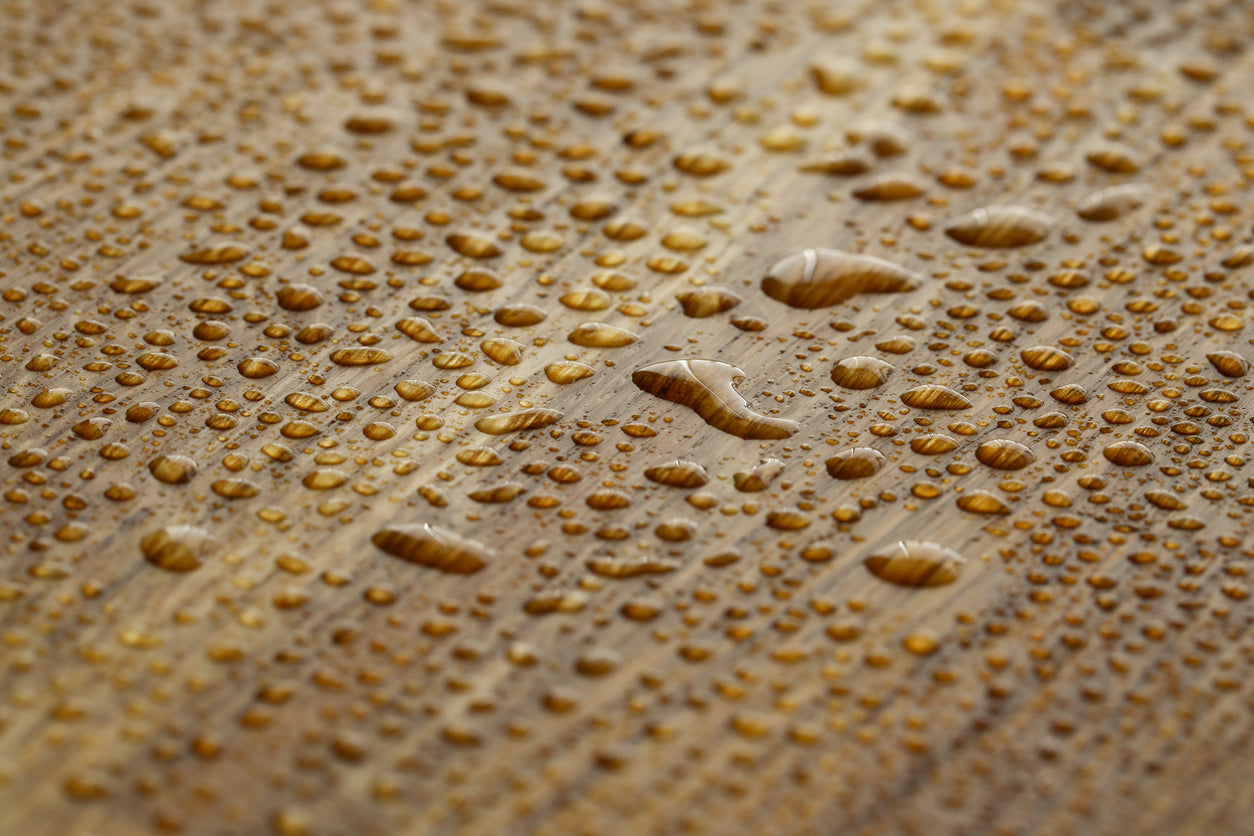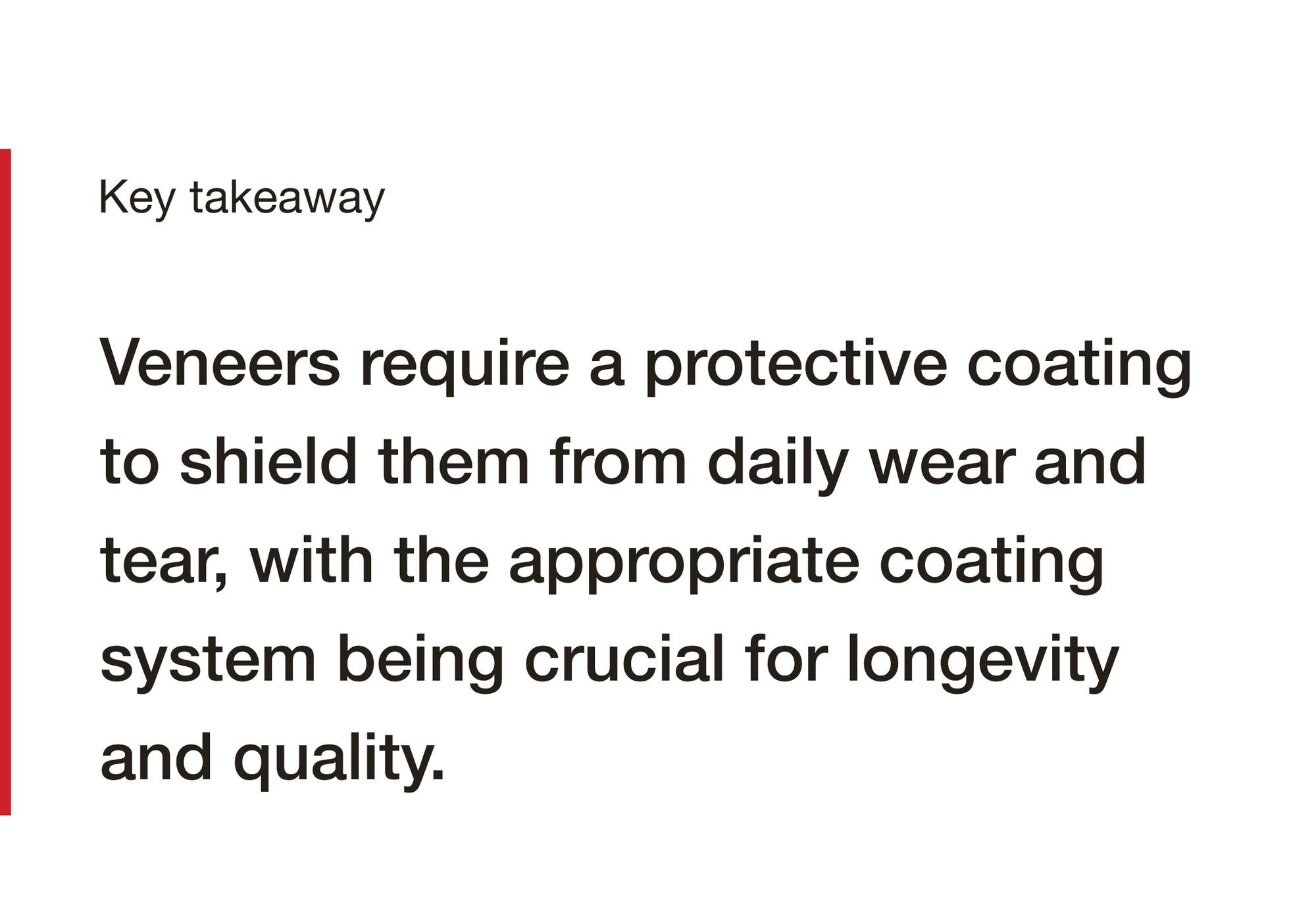
The Need for Finishing
Veneers, like most timbers, require a protective coating to shield them from the rigors of daily use. The choice of finish depends on the end-use application of the finished piece. For instance, a decorative jewellery box may not require the same level of durability as a kitchen cabinet. Selecting the appropriate coating system is crucial to ensure the longevity and quality of your veneered furniture.
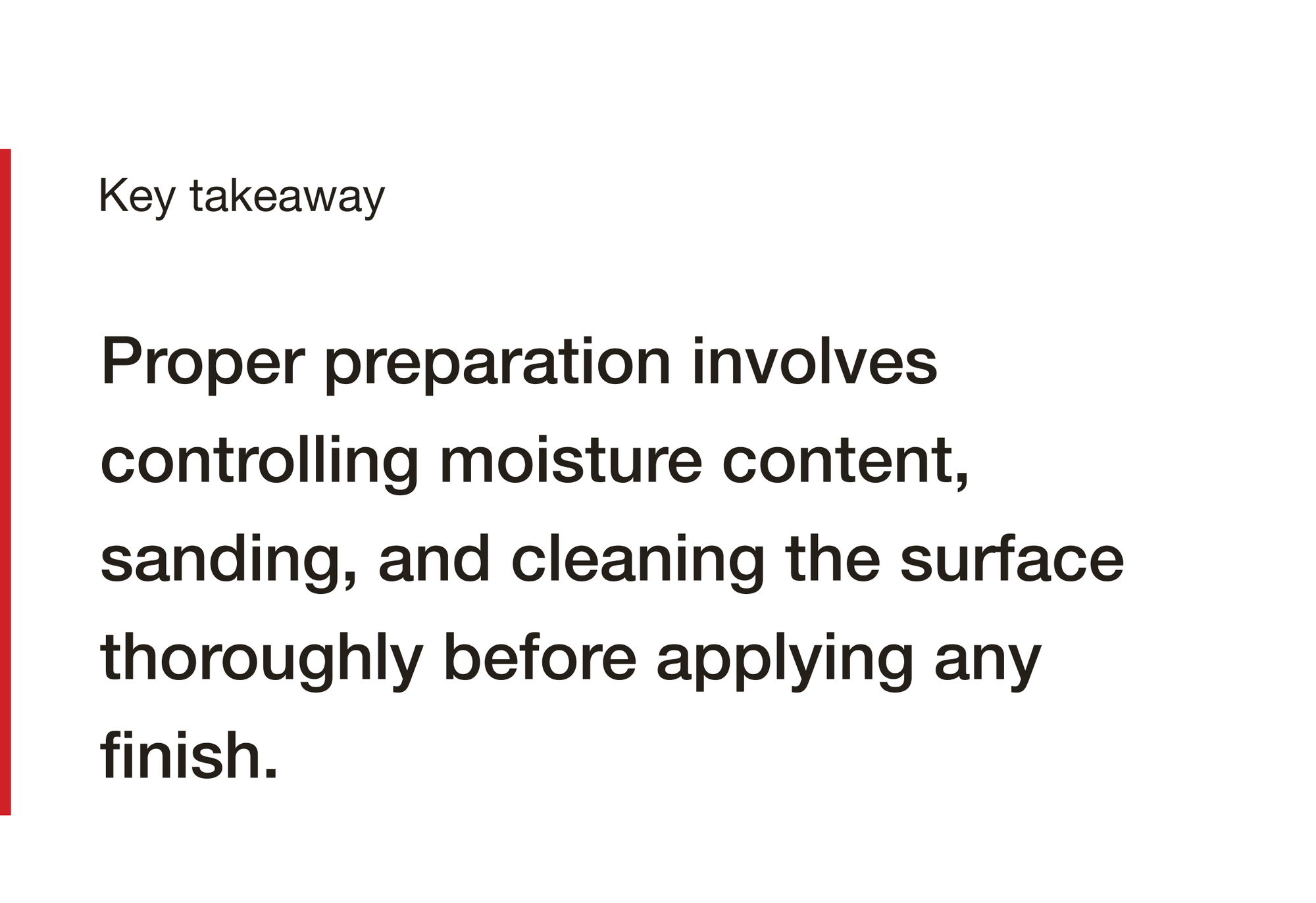
Inspection and Preparation
Before applying any finish, it is essential to properly prepare the veneered surface. The most critical aspect of preparation is controlling the moisture content of the veneered boards. High moisture content can be difficult to detect visually, so prevention is key. Store veneered boards in a cool, dry place, away from wet or humid conditions, as particleboard and MDF can absorb moisture from the air.
Sand the veneered boards until smooth, taking care to round sharp edges. Finishes, especially viscous liquids, tend to draw away from sharp edges, minimizing the seal. Ensure that the workspace is well-lit to detect any marks, indentations, or imperfections that may detract from the final appearance.
After sanding, clean the surface thoroughly. Dust and grit can adversely affect the finish quality and the final appearance of the coated article. Remove any oil, wax, or other contaminants using a wax and grease remover, followed by sanding, to prepare the veneer surface for coating.
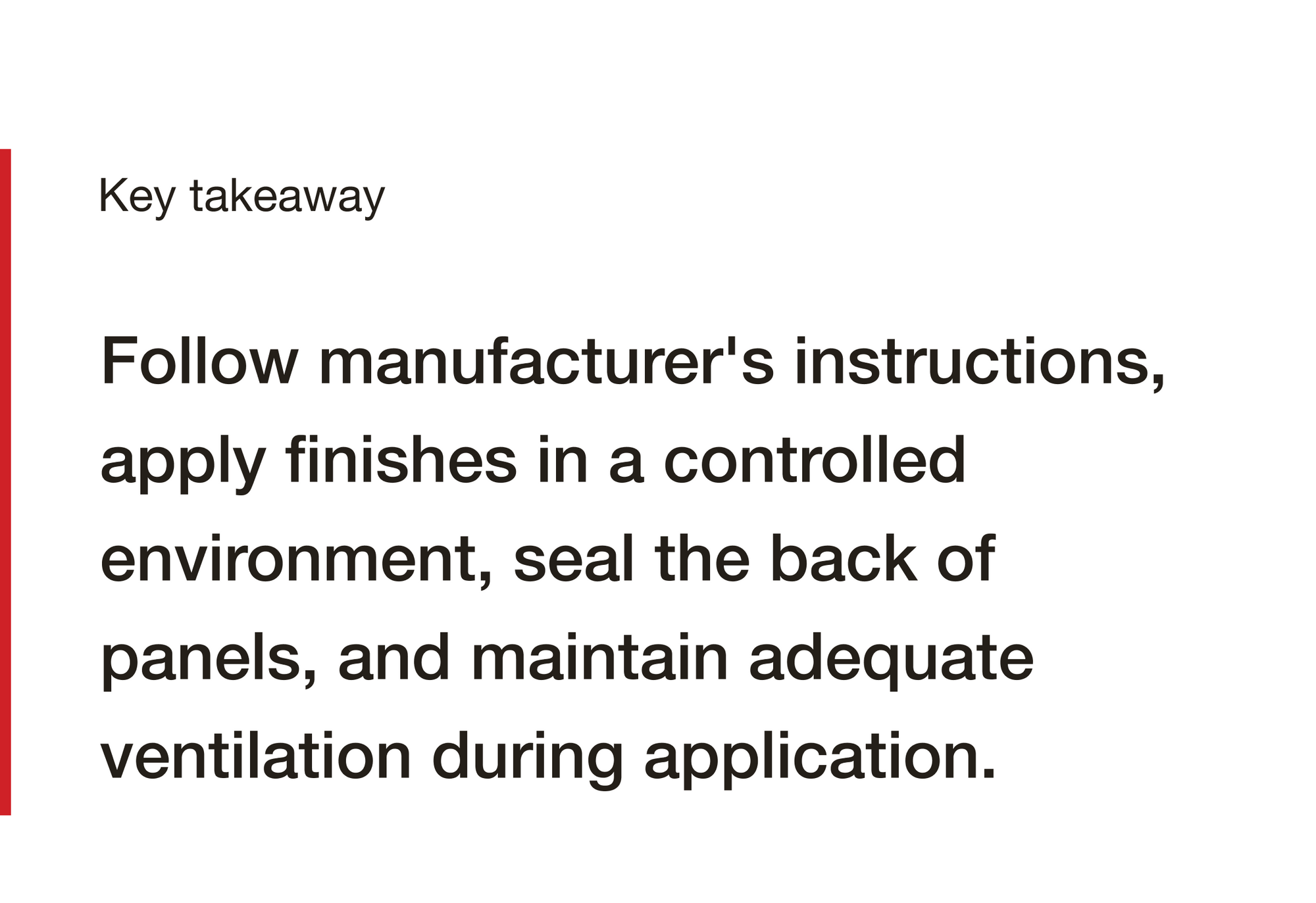
Important Precautions
Always apply coatings strictly in accordance with the manufacturer's instructions, as each coating may have different application recommendations. Shortcuts can cause problems that may take weeks or months to surface. Temperature and humidity can also affect the finish quality, so it is essential to apply finishes in controlled environmental conditions, away from draughts, dust, moisture, and other contaminants.
To slow and equalize the ingress of moisture, seal the back or reverse side of all panels. Panels not sealed in this manner may bow or cup. During application, maintain adequate ventilation and extraction to avoid inhaling vapors or sanding dust. Comply with AS4114 when using a well-exhausted spray or sanding booth. If there is a risk of inhalation (e.g., during spraying), wear face masks complying with AS1716 and use them in accordance with AS1715.
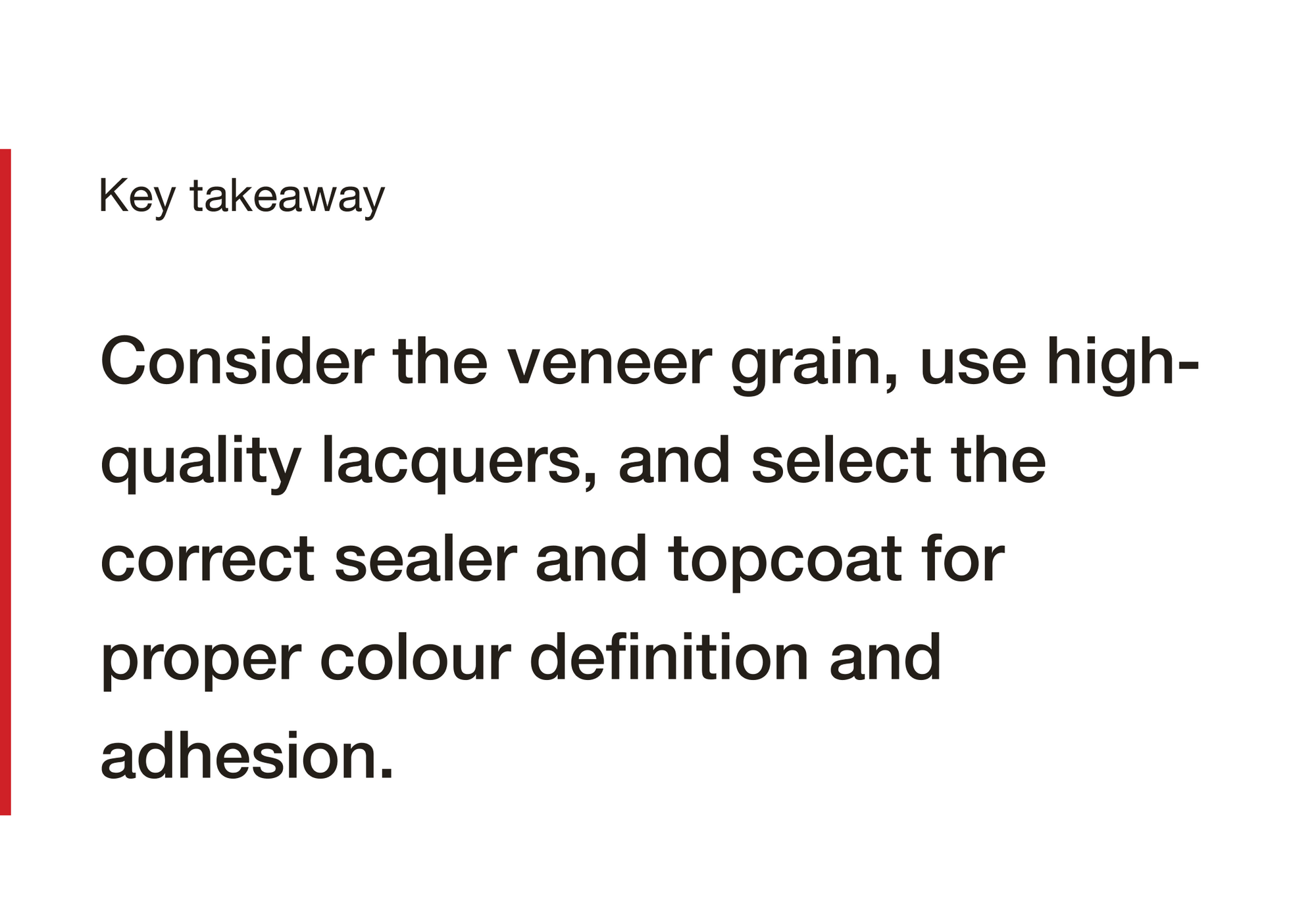
Selection of Coating
Choosing the right coating is essential for achieving a high-quality result. High-quality lacquers with higher solids content require fewer coats to achieve the desired finish. Consider the grain of the veneer when selecting a coating. Open-grained veneers may require filling (especially for a gloss finish) or a more flexible lacquer. Applying 'thin wet' coats and adding solvent can be helpful in these cases.
Some timber and veneer species contain phenols, tannins, and other chemicals in their cell structure. For these species, use a specially formulated 'isolator' coating that provides a barrier to prevent the chemicals in the wood from reacting with the chemicals in the top-coat. Consult lacquer manufacturers for advice on the most suitable coating system for particular species.
If contact adhesive has been used, be aware that solvent-based coatings can affect the veneer bond. Selecting the correct sealer and topcoat is critical to provide the proper colour definition of the timber and ensure adhesion of the coating system to the wood.
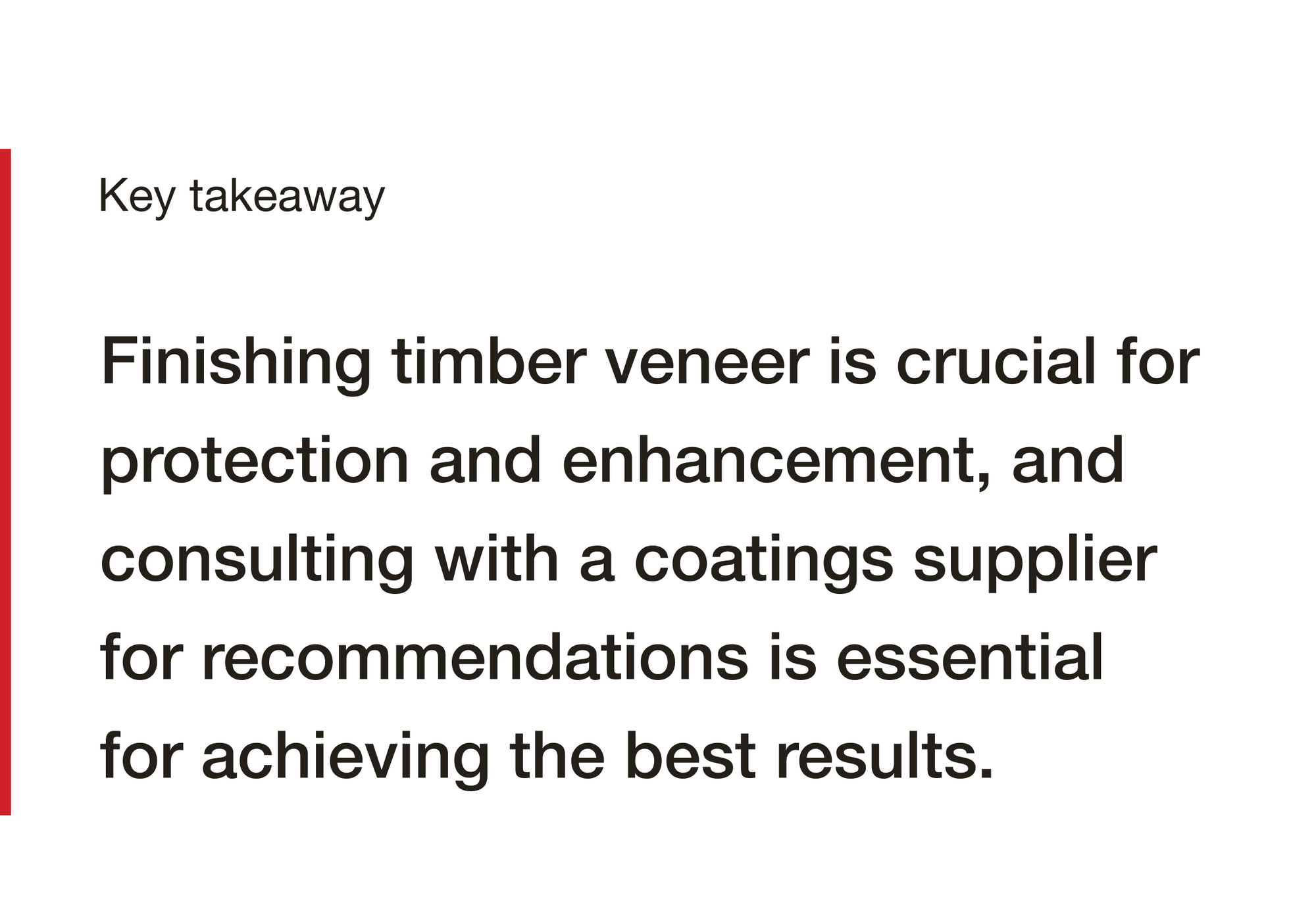
Conclusion
Finishing timber veneer is a crucial step in protecting and enhancing the beauty of your veneered furniture or interior design elements.
By following the proper preparation techniques, selecting the appropriate coating system, and adhering to important precautions during application, you can ensure that your veneered surfaces will maintain their quality and longevity for years to come.
Always consult with your coatings supplier for their recommendation of the appropriate coating system before commencing your project.

Explore Bord Products
Our Melbourne facility produces hundreds of veneer and laminate panels daily, giving us total control over timeframes and quality.

Visit Our Showroom
Get expert advice on material selection for your project and see our entire range of veneers and laminates in person.

Specify Sustainable
We support sustainable forest management in Australia and across the globe. Look out for certified products on our website or speak to us.

